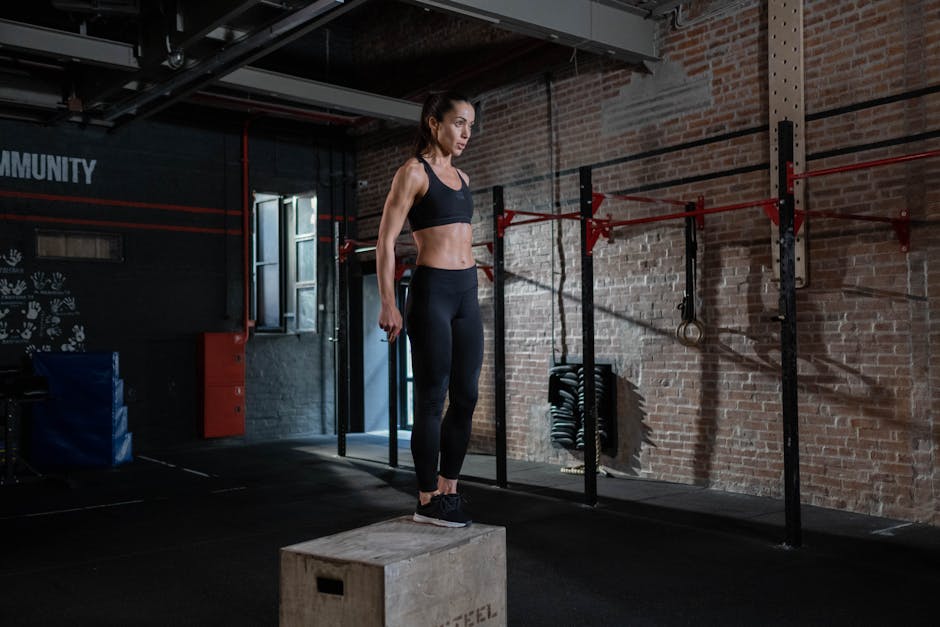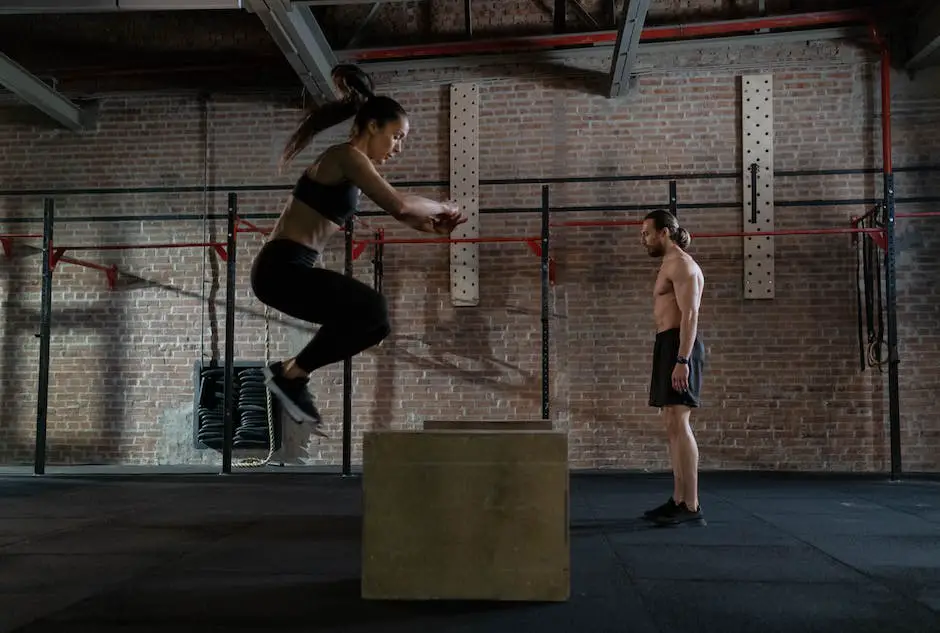Are you tired of the same old workouts that just don’t seem to give you the results you want? If you’re ready to take your fitness to the next level, it’s time to try plyometrics. Plyometrics, also known as jump training, is a high-intensity workout that focuses on explosive movements that can help you build power, speed, and strength. In this article, we’ll dive into the world of plyometrics and explore how it can help you achieve your fitness goals. Get ready to power up your workout and push your limits with this dynamic training method.
Contents
- 1 1. Explosive Exercises to Take Your Fitness to the Next Level
- 2 2. Understanding Plyometrics: A Guide to High-Intensity Training
- 3 3. Boost Your Strength and Agility with Plyometric Workouts
- 4 4. Top Plyometric Moves for Building Muscle, Burning Fat, and Improving Performance
- 5 5. How to Incorporate Plyometrics into Your Fitness Routine for Maximum Results
1. Explosive Exercises to Take Your Fitness to the Next Level
Ready to take your fitness to the next level? Explosive exercises, also known as plyometrics, are a great way to challenge your body and improve your overall athleticism. These exercises typically involve quick, explosive movements that engage multiple muscle groups, helping you build strength, power, and coordination. Here are three of our favorite explosive exercises to add to your workout routine:
- Jump Squats: Start with your feet shoulder-width apart, and lower into a squat position. Explosively jump up, straightening your legs as you go. Land back in the squat position, and repeat for a set number of reps. This exercise targets your quads, hamstrings, and glutes, while also engaging your core muscles.
- Burpees: Begin standing tall, then drop down into a push-up position. Quickly bring your knees back up to your chest, and explosively jump up, reaching your arms overhead. Land softly, and immediately drop back down into a push-up position to start the next rep. This exercise targets your chest, shoulders, triceps, quads, and core.
- Box Jumps: Stand in front of a sturdy box or bench, with your feet shoulder-width apart. Take a quick step back, then drive your arms forward and jump onto the box, landing with soft knees. Jump back down, and immediately repeat for a set number of reps. This exercise targets your quads, hamstrings, calves, glutes, and core, while also improving your balance and coordination.
Remember, explosive exercises require proper form and technique to prevent injury. It’s also important to warm up beforehand, and start with a lower number of reps or sets if you’re new to these types of movements. Incorporating explosive exercises into your workouts can help you increase your power, speed, and agility, and take your fitness to the next level.

2. Understanding Plyometrics: A Guide to High-Intensity Training
What is Plyometrics?
Plyometrics, also known as jump training, is a type of high-intensity training that involves explosive movements that aim to increase power, speed, and agility. Plyometric exercises involve contracting the muscles quickly and explosively, followed by an immediate relaxation phase that helps the muscles generate more force. The goal of these exercises is to improve the body’s ability to produce maximum force, in the shortest amount of time possible.
Types of Plyometric Exercises
There are various types of plyometric exercises, each focusing on different areas of the body. Some of the most common exercises include:
- Box Jumps: This exercise involves jumping onto a box or platform and then stepping down. It helps to increase explosive power in the lower body.
- Lateral Jumps: This exercise involves jumping laterally from side to side. It helps to improve agility and quickness.
- Medicine Ball Throws: This exercise involves throwing a medicine ball against a wall or to a partner. It helps to improve upper body strength and power.
Benefits of Plyometric Training
Plyometric training offers numerous benefits to athletes and fitness enthusiasts. Some of the benefits of plyometric training include:
- Increased Power: Plyometrics improve the body’s ability to produce maximum force, allowing athletes to jump higher, run faster, and hit harder.
- Improved Agility: Plyometric exercises require athletes to change direction quickly, improving their ability to change direction during competition.
- Reduced Risk of Injury: Plyometrics help to strengthen muscles, tendons, and ligaments, reducing the risk of injury during high-intensity activities.
3. Boost Your Strength and Agility with Plyometric Workouts
Plyometric workouts are an excellent way to increase your strength and agility. With the help of these workouts, you can train your muscles to perform explosive movements and maximize your power potential.
To enhance your ability, focus on exercises like jump squats, box jumps, jump lunges, and burpees. These moves involve rapid contractions that allow your body to generate maximum force and build strength. Additionally, plyometrics help to improve your agility, which is crucial for athletes looking to excel in their respective sports.
One of the best things about plyometric workouts is that they can be done anywhere, anytime. There’s no need for heavy weights or gym equipment, making these exercises an affordable and accessible option for everyone. By incorporating plyometrics into your workout routine, you can enhance your athletic performance and achieve your fitness goals.
4. Top Plyometric Moves for Building Muscle, Burning Fat, and Improving Performance
Looking for a high-intensity workout that can build muscle, burn fat, and improve your overall athletic performance? Plyometric exercises might just be the perfect solution. These explosive moves focus on quick and powerful movements that engage your fast-twitch muscle fibers, allowing you to build strength, speed, and agility. Here are some of the top plyometric moves you should add to your routine:
Jumping Squats: This classic plyometric move targets your glutes, quads, and hamstrings while also elevating your heart rate to promote fat burning. To perform, start in a squat position with your feet hip-width apart. Explosively jump up, extending your arms overhead as you do. Land softly back in the squat position, making sure to land on the balls of your feet.
Burpees: This full-body move is a favorite among fitness enthusiasts thanks to its ability to engage multiple muscle groups at once. To perform a burpee, start in a standing position before dropping into a squat, then jumping your feet back into a plank position. Do a push-up before jumping your feet back up to your hands and explosively jumping up into the air.
Plyometric Lunges: Add some excitement to your lunges with this plyometric variation that will challenge both your strength and balance. To perform, start in a lunge position with your right foot forward. Push off your right foot and jump up, switching your feet in mid-air so that your left foot lands in front. Repeat for reps, making sure to land softly on each jump.
Incorporating these plyometric moves into your workout routine can not only help you burn fat and build muscle, but also improve your overall athletic performance. Remember to start slow and gradually increase the intensity of your workouts to avoid injury. With a little bit of practice, you’ll be on your way to achieving your fitness goals in no time.
5. How to Incorporate Plyometrics into Your Fitness Routine for Maximum Results
Plyometric exercises are high-intensity movements that are commonly used by athletes and fitness enthusiasts to improve their power and explosiveness. These exercises involve quick, explosive movements that target the fast-twitch muscle fibers in your body, which are responsible for producing force and power. If you’re looking to incorporate plyometrics into your fitness routine for maximum results, here are some tips to help you get started.
1. Begin with basic exercises: If you’re new to plyometrics, it’s best to start with basic exercises like jump squats, clap push-ups, and box jumps. These exercises will help you build a foundation of strength and power before moving on to more advanced exercises. Start with 2-3 sets of 10 reps and gradually increase the intensity and volume as your body adapts to the movements.
2. Focus on proper form: Plyometric exercises are high-intensity movements that place a lot of stress on your joints and muscles. To avoid injury and maximize your results, it’s important to focus on proper form and technique. Make sure you land softly and absorb the impact of the movement with your muscles rather than your joints. Keep your core engaged and maintain good posture throughout the movement.
3. Incorporate plyometrics into your existing routine: Plyometrics can be incorporated into your existing workout routine to add variety and challenge to your workouts. For example, you can add jump squats to your leg day routine or include clap push-ups in your upper body workout. Be creative and find ways to incorporate plyometrics that work for your fitness goals and level of fitness. With consistent effort and dedication, you’ll soon see the results of your hard work. As you can see, plyometrics offers a unique and dynamic way to power up your workouts. By incorporating explosive movements that target your fast-twitch muscle fibers, you can enhance your athletic performance, increase your strength, speed, and agility, and push yourself to new limits. However, be sure to consult with a certified trainer or fitness professional before trying out any new exercises to avoid injury and ensure proper form. So go ahead, power up your workout with plyometrics, and achieve your fitness goals like a true pro.








Leave A Comment